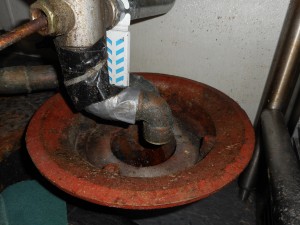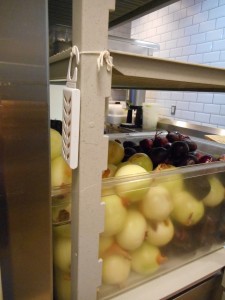Beginning in about the year 2000, nearly all organophosphate pesticides became unavailable for use in homes. This was done primarily to limit exposure of children to active ingredients that negatively affect their health and development. Despite this extensive cancellation of organophosphates for structural pest management, one holdover active ingredient from that era remains today: dichlorvos (2,2-dichlorovinyl dimethyl phosphate, or DDVP).
The most common use of this product is as a slow-release vapor from impregnated resin plastic blocks. Pest-strips, as they are called, are used to treat a variety of pests including flies, gnats, mosquitoes, moths, silverfish, cockroaches, spiders, beetles, and earwigs. Like all pesticides, the label instructions are the law, and pest-strips have very strict requirements for use. The guidelines for these products are not intended to make the life of pest professionals difficult, but to reduce human exposure to active ingredients that can cause nausea, headaches, twitching, trembling, excessive salivation and tearing, inability to breathe from a paralyzed diagram, convulsions, and if concentrations are exceedingly high — death.
Legal Uses.
In general, products containing dichlorvos are intended for use in confined spaces where people will not be present for more than four hours at a time. Depending on the size of the product (16 or 65 grams), each pest-strip can treat an area of 100 to 1,200 cubic feet for up to four months (1,200 cubic feet is a room that measures 10 by 15 by 8 feet). Some areas where these products can be used include garages, sheds, attics, crawl spaces, storage units, trash bins, and for the small sizes (16 g): pantries, cupboards, and closets. Many other commercial applications are listed on the label.
Illegal Uses.

Unfortunately, these products are sometimes used in violation of the label directions to treat pests in spaces where people are present for more than four hours, or where food is present. A common example that makes me cringe is the use of pest-strips in food establishments. Especially cringe-worthy is when numerous strips are used in a kitchen where food is prepared and workers are present for a full day. Yes, I’m talking about your average restaurant.

Address the Problem.
It is critical to understand that the use of pest strips for fly control at a drain or cockroach control by a grill line are not treating the problem, only the symptom. The real problem in these scenarios is the presence of food and shelter: accumulated organic debris in drains, food spillage behind and under equipment, and cracks or crevices in structures that provide harborage. If you remove these conditions you treat the problem and eliminate the symptoms.
Remember, for all pesticides and pesticide products, the label is the law. As an applicator, you are responsible and legally obligated to follow the instructions that are intended to reduce health risks for you and your clients.
For more information on pest-strips in structural pest management:
CDC Warning on Misuse of Pest Strips by Gwen Pearson
Careful Use of Nuvan Strips by Mike Merchant